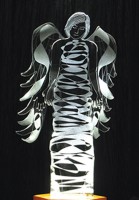- Home
- Products
- Sound Tech and PA
- Sound Tech DVDs & Downloads
- Free Tech Resources
- Free Sound Tech Lessons
- Playing By Ear
- Play By Ear DVDs & Downloads
- Ear Training & Music Theory Resources
- Worship Leading
- Worship Leading Course Downloads
- Free Worship Leader Training
- Free Worship Leader Resources
- Worship Band Skills
- Band Skills DVDs & Downloads
- DIY Worship Team Workshops
- Free Worship Team Training
- Free Worship Team Resources
Stages of the grief process
It was Swiss-American psychiatrist, Elizabeth Kübler-Ross, a pioneer in near-death studies and the author of the ground breaking book On Death and Dying, who first established a set of stages she called ‘The Grief Process’. Her research during the 1960s resulted in a set of five stages – Denial, Anger, Bargaining, Depression and Acceptance – that may or may not present themselves in a linear progression. They were designed to give a framework and a shape to the jumble of emotions and thoughts being experienced by a bereaved person. Stages may be passed through and experienced in different ways as everyone’s journey is as personal to them as their fingerprint.
The summaries of each stage below are drawn from descriptions of the stages that appear on the back of the Ramryge Angel Cards designed by Claudia Brown (read the story behind them here). Claudia has added her own 6th stage – Peace, which she believes is attainable after Acceptance, through faith and trust in God and offers hope in the midst of distress.
1. Denial is seen as the first stage of the grief process. When in Denial we can find ourselves in a state of shock, numbness, or panic and generally refuse to accept reality. Denial is the shock absorber for the soul and a natural reaction to pain, loss and change.
2. Anger is seen as the second stage. When we have stopped denying our loss, feelings of anger, frustration or rage can emerge. We may be angry at God, ourselves, our situation and the people around us. This anger can be reasonable and justified or sometimes irrational and misdirected as we seek to blame someone or something for our loss.
3. Bargaining is the third stage. After the anger has begun to subside, we may attempt to strike a bargain with ourselves, another person but most probably God. We feel that if we do this or someone else does that then by some miracle we can prevent our loss. This is often futile and comes from a desperate place.
4. Depression is seen as the fourth stage. When we see that bargaining hasn’t worked and we are exhausted from our struggle to ward off reality, we finally acknowledge what has happened and feel the pain. It is often at this stage that deep sadness and depression can set in and this is what we have been trying to avoid. This is the essence of grief – mourning at its fullest and begins when we humbly surrender.
5. Acceptance is seen as the fifth stage. Having finally felt the pain of our loss, the end to our struggle is at hand. Acceptance is not necessarily a happy stage, but the pain has almost subsided and there is a sense of freedom and release. We have adjusted to and become more comfortable with what our life has become and we are ready to move forwards.
6. Peace is an extra stage beyond Acceptance. Having finally achieved acceptance of the reality of our present circumstances, we can begin to find peace. Peace within our heart, peace in the joy of life and peace with God. We don’t forget the past but can now take positive steps into our future, having been through the grief process to emerge, changed.
Claudia Brown is an artist mainly specialising in perspex. See more at perspexangel.co.uk. She creates jewellery, functional items, sculptural forms, gifts and lighting, and is interested in the idea of ‘drawing with light’, by etching onto the surface of Perspex.
Claudia is happy to work to commission and enjoys the challenge of working on creative projects that mean something special to those she is working for. The journey is part of the process, using her creative and practical skills to find solutions. Christian and spiritual themes often form part of her work as she seeks to create pieces that have a deeper resonance.
Claudia also undertakes commissions and low cost freelance graphic design projects with a growing client base of church-based organisations. Do contact her for further information.









 Free Band Skills course with all Musicademy or Worship Backing Band DVD orders
Free Band Skills course with all Musicademy or Worship Backing Band DVD orders  Free gift with all Musicademy and Worship Backing Band DVD orders
Free gift with all Musicademy and Worship Backing Band DVD orders  Worship Training Day Ealing London 5 November 2022
Worship Training Day Ealing London 5 November 2022  How to get maximum exposure for your song writing
How to get maximum exposure for your song writing  Streaming online church services: the tech, the tips and the stories from around the world
Streaming online church services: the tech, the tips and the stories from around the world  What do you most struggle with as a worship musician?
What do you most struggle with as a worship musician?  Worship Leader Training: Beginning and Ending Songs Well
Worship Leader Training: Beginning and Ending Songs Well  Learn how to play by ear
Learn how to play by ear  4 tips for making good use of your mic
4 tips for making good use of your mic 

